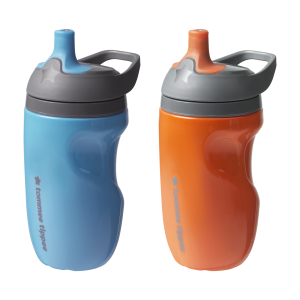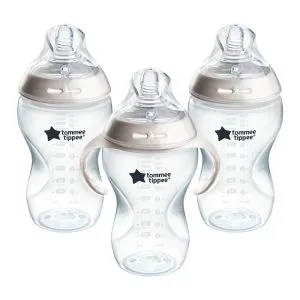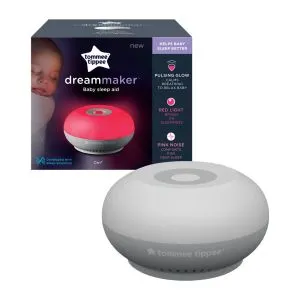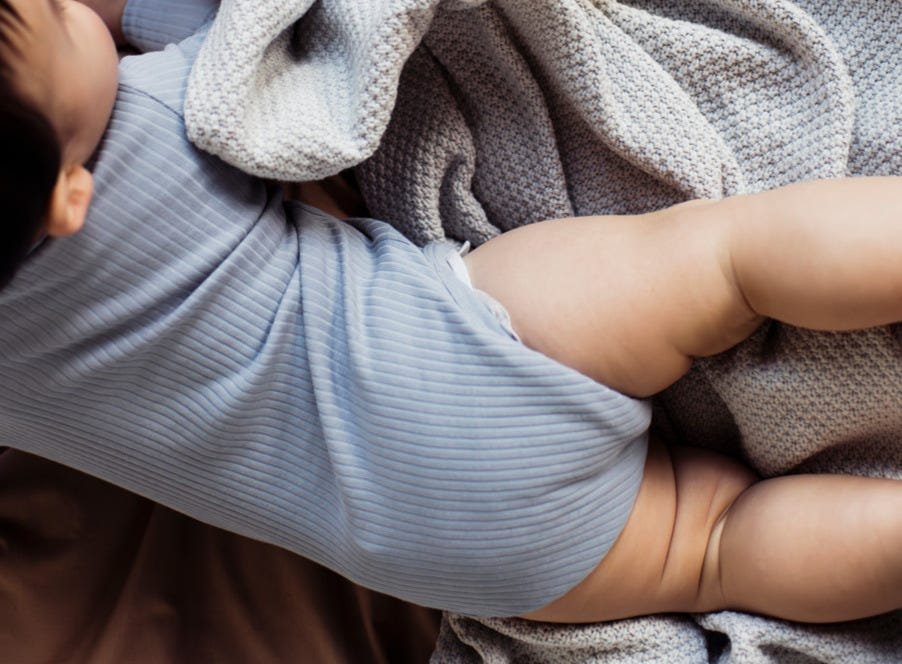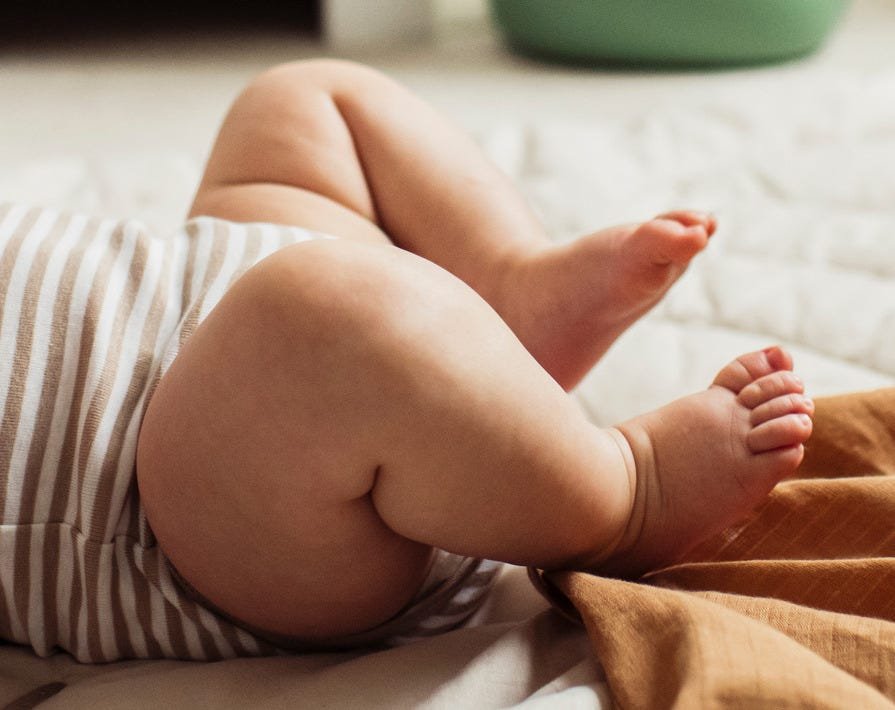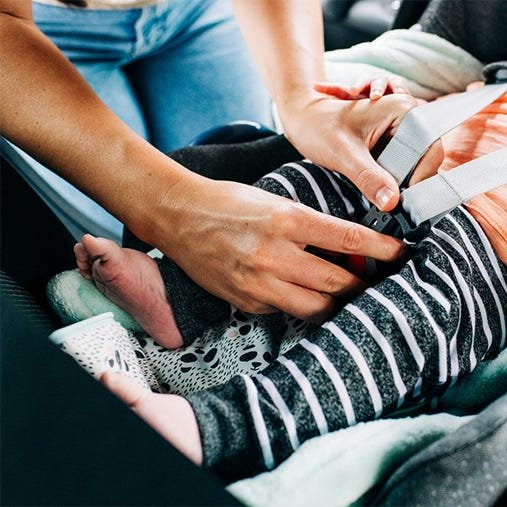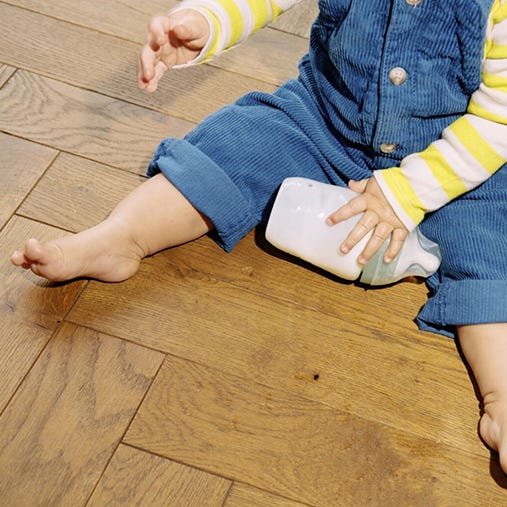Most adults find getting a massage relaxing, and babies are no different! To help you learn how to massage your baby, let's run through some key points and top tips.
What is a baby massage?
Baby massage has been practised by many cultures for thousands of years. But it was first commonly introduced to neonatal wards in Western countries around 30 years ago to support the development of premature babies.
It's a calming and reassuring process that involves rhythmic and gentle stroking of your baby's body, including key pressure points such as their fingers, wrists, and ankles. You can use your hands and an appropriate oil or lotion that's baby-safe.
The benefits of baby massage
Massage can be an enjoyable experience for both you and your little one. It's a great way to bond, and there are lots of other benefits that come with it. These include...
Bonding
Touch is an important sense for bonding, and it can help to create a deep emotional connection between baby and parent. In the early days, massaging your baby can also help you to become more confident when handling and caring for them, and it gives you a chance to learn more about their body language and behaviour.
Relaxation and communication
Touch during a relaxing massage releases oxytocin - the love hormone - for both you and your baby. So, when you massage them, you'll feel calmer and happier too! It also provides a lovely opportunity for you to have uninterrupted eye-to-eye contact and practice copying and turn-taking - which are key to help little ones learn conversation skills from an early age.
Relieving gas, aiding digestion, and soothing teething pains
Some parents start massaging their baby when they need relief from trapped gas. A soothing body massage has lots of gastrointestinal benefits, including providing relief from wind, colic, constipation and teething discomfort.
Boosting immunity
Positive touch during massage can assist in lymphatic flow, which can help fight off infections and boost their immune system.
Aiding sleep
Having a scheduled massage after their bath and before bedtime creates a set schedule for a baby. This can help make them feel relaxed and secure, and aid in them settling into a sound sleep.
Improving circulation and physical strength
Baby massage can improve a little one's blood circulation and aid their physical development. It's also a good way to ease and prevent muscular cramps that can occur from time to time before they're able to crawl and walk independently.
How to do a baby massage
There's no one-size-fits-all guide when it comes to baby massage. There are lots of different techniques out there, but the following steps can help you get started...
- First things first, you should never use any grownup massage techniques or apply increased pressure on any part of your baby's body.
- It's a good idea to massage your baby in between feeds when they're not too hungry or too full. Try to choose a time when they're content and settled.
- Make your surroundings as calm and cosy as possible. Try to block any draughts and get rid of any background distractions.
- Lay your baby gently in front of you on a clean, dry towel or their changing mat. Gently undress them (you can either leave their nappy on or take it off) and signal to them that you're going to massage them by asking for permission - "can I give you a nice massage?".
- To begin the massage, you can use one fixed gentle move - such as softly massaging the bottom of their feet or gently rubbing their ears. This communicates to your baby that it's time for a massage. If your little one seems comfortable and maintains eye contact, you're good to go!
- If they seem uncomfortable or unhappy, stop the massage and pick them up for a snuggly cuddle instead.
- Singing or chatting to your baby about the stages of their massage as you go helps them to feel safe. It can also support their language development and understanding of their body and how it moves.
- Begin massaging their feet by gently applying light pressure on their heels and tiny toes.
- Then, gently stroke up and down from the baby's ankles, towards their knees, and then slowly move to their thighs and back to their ankles again.
- Next, it's time for the arms. Here, you can repeat the same short gentle strokes, then transition to longer strokes. Try drawing small circles and gently massaging their palms, wrists, and fingers.
- If your baby's umbilical stump has fallen off, you can move on to gently caressing their tummy, but keep in mind that their belly is the most sensitive part of their body. To massage their stomach, begin at the bottom of their chest, and draw a clockwise, semi-circular shape with your palms without applying pressure.
- If you'd like to massage your baby's face, you can do so by very gently massaging their cheeks with your thumbs in a clockwise, circular motion. Then, move on to their forehead, starting at the centre of their forehead and moving outwards, while gently stroking the outline of their face with your finger.
- After around 15 to 30 minutes, you and your little one will hopefully be thoroughly relaxed!
